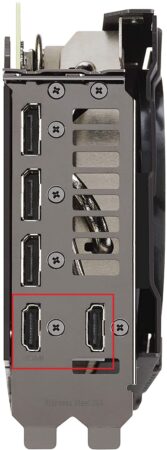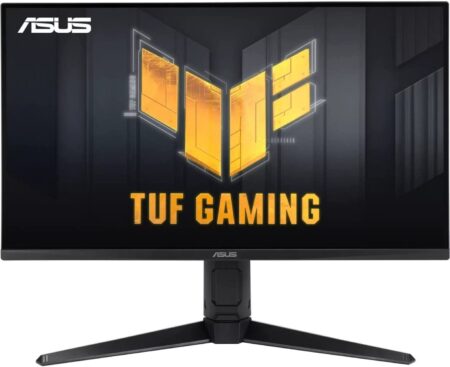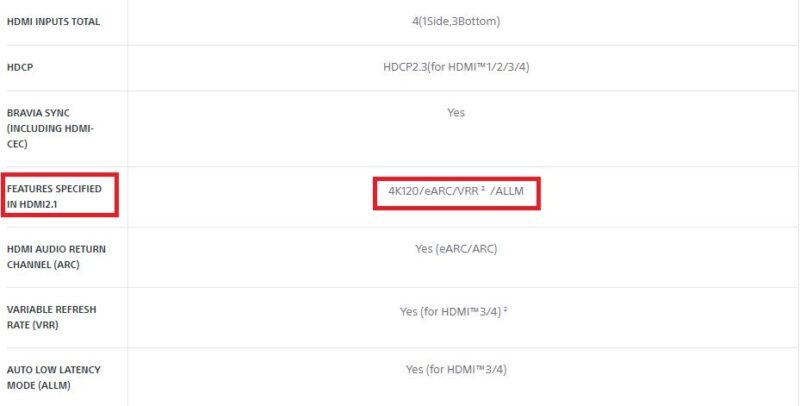The only definitive method to check the HDMI port version on your monitor, TV, PC, or any other multimedia device is to check its spec sheet. The spec sheets give you the best answer regarding the version of the HDMI port you have.
For desktop PCs, you can check the spec sheet of either the motherboard or the graphics card to identify its version. For laptops, that is also relatively straightforward, as a simple search for its technical spec sheet would reveal the version of the HDMI port it uses. The same goes for monitors, TVs, projectors, home theater systems, etc.
However, before you indulge yourself in the spec sheet of your device, you have to understand the technical jargon, particularly regarding what the different HDMI versions entail.
In the following text, I will discuss how to check the HDMI port version and how to identify which version your particular device has.
TABLE OF CONTENTS
Different HDMI Versions and Data Rates
There are various HDMI versions. Each newer version increases the overall bandwidth of the HDMI interface. In other words, more recent versions can carry more information.
This, in turn, means that a newer HDMI version would support higher resolution, higher refresh rates, and a higher color bit depth.
This brings us to the next point: the amount of data rate sent over the interface depends upon these three parameters:
- Resolution
- Refresh rate
- Color bit depth
The higher these parameters, the more data your interface would need to carry. However, your interface must have enough capacity to support your desired data rate.
Also Read: Can You Add HDMI Ports to a Computer or Laptop? (Answered)
This is where the newer and improved version of HDMI comes into play. The following table shows the different HDMI versions, the total bandwidth they can carry, and the max resolution and frame rate they can support.
| HDMI Version | Max Resolution | Max Refresh Rate | Max Bandwidth (Gbit/s) | Effective Bandwidth (Gbit/s) | HDR? | Audio Technology Supported |
|---|---|---|---|---|---|---|
| HDMI 1.0 | 1080p | 1080p @ 60 Hz | 4.95 | 3.96 | No | – 8 Audio Channels |
| HDMI 1.1/1.2 | 1440p | 1440p @ 30 Hz | 4.95 | 3.96 | No | – 8 Audio Channels -Super Audio CDs |
| HDMI 1.3/1.4 | 4096 x 2160 (4K) | 120 Hz @ FHD Resolution 30 Hz @ 4k Resolution 24 Hz @ 4k Resolution | 10.2 | 8.16 | No | – 8 Audio Channels – ARC – Dolby TrueHD – DTS-HD |
| HDMI 2.0 | 4096 x 2160 (4K) | 60 Hz @ 4K Resolution | 18 | 14.40 | Yes | – 32 audio channels, – Dynamic Resolution Adaptation (DRA) – High-Efficiency Advanced Audio Coding (HE-AAC) |
| HDMI 2.1 | Upto 10240 x 4320 (10K) | Upto 120Hz @ 10K | 48 | 42.67 | Yes | – 32 audio channels – eARC |
So, in other words, if you wish to run a 4K display, you must have at least an HDMI 1.4 interface. However, if you want to run a 4K display at 60Hz, you will need an HDMI 2.0.
Similarly, if you wish to play at Full HD @ 144Hz, the HDMI 1.4 interface would suffice. However, to play Full HD @ 240Hz, you will need HDMI 2.0.
A perfect equation to take note of to calculate the data rate for your desired settings is as follows:
(H + Hblank) × (V + Vblank) × (C x 3) × F
Where,
- H is the horizontal pixel count
- V is the vertical pixel count
- C is the color depth
- F is the refresh rate
- Hblank is the Horizontal blanking interval
- Vblack is the Vertical blanking Interval
Hblank = 80 pixels for FHD @ 60 Hz, Vblank = 30 Pixels for FHD @ 60 Hz. These changes depend on the desired resolution.
How To Check HDMI Port Version?
With that said, the only definitive way to check the HDMI port version is through the spec sheet of your device.
Various devices feature an HDMI port. Some feature them as output, whereas others feature them as input ports. The devices include, but are not limited to:
- Desktop Motherboard – Output HDMI Ports
- Desktop Graphics Card – Output HDMI Ports
- Laptop – Output HDMI Ports
- PC Monitors – Input HDMI Ports
- Televisions – Input HDMI Ports
Other devices include gaming consoles, projectors, home theater systems, etc.
Checking HDMI Port Version on Motherboard – Output HDMI Ports
You can check the version of the HDMI port on your motherboard through its spec sheet by heading over to the section labeled “graphics,” “onboard graphics,” or something along those lines.

Here you can see that the HDMI port on this motherboard supports 4096×2160 resolution @ 60 Hz refresh rate. This corresponds to HDMI 2.0. However, the caveat underneath shows that it can also support monitors with HDMI 2.1, but its max resolution and frame rate will conform to those of HDMI 2.0.
Checking HDMI Port on Graphics Card – Output HDMI Ports
The dedicated graphics card on desktop PCs also has HDMI ports. Since dedicated graphics cards are more robust and powerful than onboard motherboard graphics cards, they tend to feature newer and faster port versions more readily.
You can also check the HDMI port version on a graphics card through its spec sheet.

You can see here that this graphics card features 2 x HDMI 2.1 ports.

Also Read: Do Monitors Have HDMI Ports?
Checking HDMI Port Version On Laptop – Output HDMI Ports
You can also use the same principle to check the HDMI version of your laptop’s port.
The following image shows the HDMI version of the MSI GL66 Pulse gaming laptop.

It is worth noting here that instead of mentioning the HDMI version, here you can see the specs of the HDMI in terms of max resolution and refresh rate supported by the port, i.e., 4K @ 60Hz.
From the specs of the port alone, we can deduce that this refers to HDMI 2.0. As mentioned in the table above.
Also Read: How to Check HDMI Port on Laptop?
Checking HDMI Version on PC Monitors – Input HDMI Ports
PC monitors have input HDMI ports, unlike the previous three devices, which feature output HDMI ports.
To run the interface at a specific version, both the output AND the input devices must have the same version.
In other words, if you want to run your monitor at 4K @ 60Hz, you will need both your PC and your monitor to have HDMI 2.0 interface. The same goes for TVs.
Monitors can have multiple HDMI input ports. These can connect numerous devices, such as a PC in one HDMI port and a gaming console in the other.
You can also check the version of the HDMI port on a monitor through the spec sheets.

The following image shows the spec sheet for ASUS Tuf Gaming VG28UQL1A – a premium 4k gaming monitor.

You can see that this monitor features a total of 4 x HDMI ports. 2 of them correspond to HDMI 2.0 while the other two conform to HDMI 2.1 version.
Also Read: What is the Best HDMI Port for Gaming?
Checking HDMI Port Version on Televisions – Input HDMI Ports
TVs also feature multiple HDMI input ports. The simplest way to check the version of HDMI ports on a TV is also through its spec sheet.
The spec sheet often tells you exactly what version the HDMI ports conform to. The following image shows the spec sheet for Sony Bravia A90J, and we can see that this TV has HDMI 2.1 ports, which makes sense because it can do 4K @ 120Hz.

However, sometimes, TVs do not specify the version of HDMI. In that case, you can tell what HDMI version they conform to using the TV’s highest resolution and refresh rate.
For instance, if a TV has a resolution of 4K and a refresh rate of 60Hz, then it would offer HDMI 2.0 interface. If the refresh rate or the resolution is higher than this, then it would have HDMI 2.1 ports.
If a TV is full HD but has an actual refresh rate of 240Hz, it would again have HDMI 2.0 ports. If a TV is Full HD and has a refresh rate of merely 120Hz, it could have HDMI ports conforming to only HDMI 1.4. I would again like you to refer to the equation mentioned earlier, which you can use to calculate the data rate for your desired resolution and refresh rate.
Also Read: Does HDMI Support 240Hz?
Final Words
Here I talked comprehensively about how to check HDMI port versions on various input and output devices such as monitors, TVs, and PCs.
Again, if a particular device does not precisely specify the version, you can often deduce it by looking at the maximum refresh rate and the resolution supported by the device.
FREQUENTLY ASKED QUESTIONS
1. Can I use an older HDMI cable with a newer HDMI port, or do I need to upgrade the cable as well?
Yes, it is generally possible to use an older HDMI cable with a newer HDMI port.
However, it’s essential to note that older cables may not support the newer HDMI features, such as higher resolutions or refresh rates. To take full advantage of the newer HDMI features, it may be necessary to upgrade to a newer HDMI cable.
2. Can I upgrade the HDMI port on my device, or do I need to replace the entire device?
In most cases, it is not possible to upgrade the HDMI port on a device, as it is typically integrated into the device’s hardware. If the HDMI port is damaged or not functioning correctly, it may be necessary to replace the entire device or have the port repaired by a professional.
3. Are there any compatibility issues with using a different HDMI version than the one specified for my device?
Using a different HDMI version than the one specified for your device can potentially lead to compatibility issues, especially if the device or cable is older.
For example, using an older HDMI cable with a newer HDMI port may not support the newer HDMI features, such as higher resolutions or refresh rates.
It’s always best to check the device’s documentation or consult with the manufacturer to ensure compatibility before using a different HDMI version.
Also Read: How to Check HDMI Cable Version?
